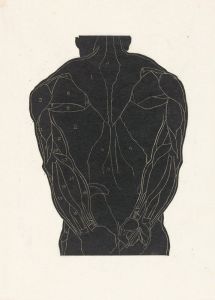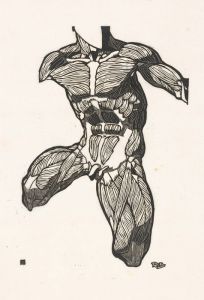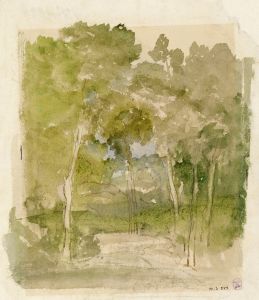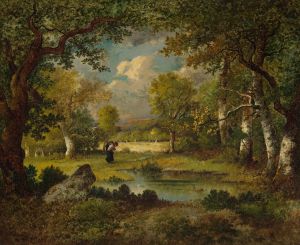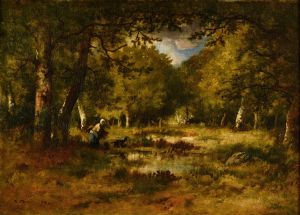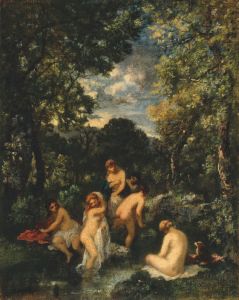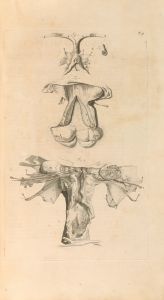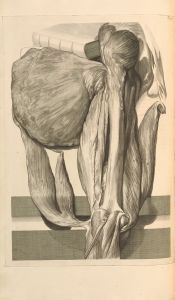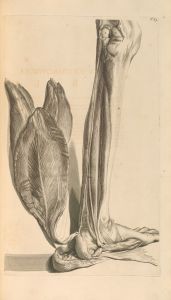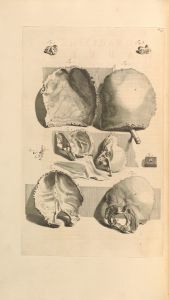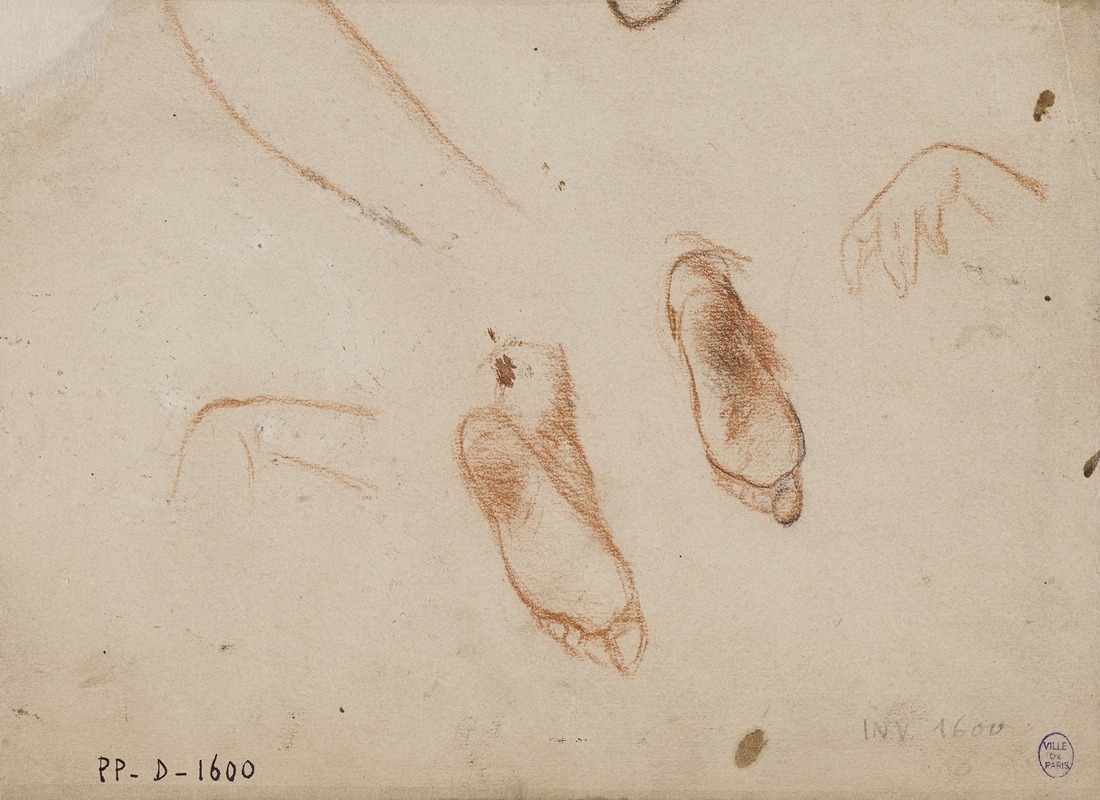
Deux études de pieds et de main
A hand-painted replica of Narcisse-Virgile Diaz de La Peña’s masterpiece Deux études de pieds et de main, meticulously crafted by professional artists to capture the true essence of the original. Each piece is created with museum-quality canvas and rare mineral pigments, carefully painted by experienced artists with delicate brushstrokes and rich, layered colors to perfectly recreate the texture of the original artwork. Unlike machine-printed reproductions, this hand-painted version brings the painting to life, infused with the artist’s emotions and skill in every stroke. Whether for personal collection or home decoration, it instantly elevates the artistic atmosphere of any space.
Narcisse-Virgile Diaz de la Peña, a prominent French painter of the 19th century, is known for his contributions to the Barbizon School, a movement that emphasized naturalism and the beauty of the French countryside. One of his notable works is "Deux études de pieds et de main" (Two Studies of Feet and Hand). This piece exemplifies Diaz de la Peña's skill in capturing the human form with meticulous detail and sensitivity.
"Deux études de pieds et de main" is a study drawing that focuses on the anatomical precision and expressive potential of the human body. The artwork features detailed renderings of a foot and a hand, showcasing the artist's keen observation skills and his ability to convey texture, form, and movement. Such studies were common practice among artists of the time, serving as exercises to refine their technique and understanding of human anatomy.
Diaz de la Peña's approach in this drawing reflects his broader artistic philosophy, which combined elements of Romanticism with a deep appreciation for nature and the human figure. His works often exhibit a rich use of color and a dynamic composition, traits that can be traced back to his early influences and training. Born in Bordeaux in 1807, Diaz de la Peña faced numerous challenges in his early life, including the loss of his parents and a severe leg injury that resulted in amputation. Despite these hardships, he pursued his passion for art, studying under François Souchon and later becoming associated with the Barbizon School.
The Barbizon School, named after the village of Barbizon near the Forest of Fontainebleau, was a group of artists who sought to break away from the formalism of academic art. They emphasized painting en plein air (outdoors) to capture the transient effects of light and atmosphere. Diaz de la Peña, alongside contemporaries such as Théodore Rousseau and Jean-François Millet, played a significant role in this movement, contributing to its development and popularity.
In "Deux études de pieds et de main," Diaz de la Peña's mastery of line and shading is evident. The careful rendering of the foot and hand demonstrates his understanding of anatomy and his ability to depict the subtleties of skin, muscle, and bone. This drawing not only served as a study for the artist but also stands as a testament to his dedication to his craft and his pursuit of artistic excellence.
While Diaz de la Peña is perhaps best known for his landscape paintings, which often feature lush forests and dramatic skies, his figure studies reveal another dimension of his talent. These works highlight his versatility and his commitment to exploring different aspects of art, from the grandeur of nature to the intricacies of the human body.
"Deux études de pieds et de main" remains an important piece within Diaz de la Peña's oeuvre, illustrating his technical prowess and his ability to infuse even the simplest subjects with a sense of life and vitality. Today, his works are celebrated for their contribution to 19th-century French art and their influence on subsequent generations of artists. Diaz de la Peña's legacy continues to be appreciated by art historians and enthusiasts alike, who recognize his role in shaping the trajectory of modern art.





